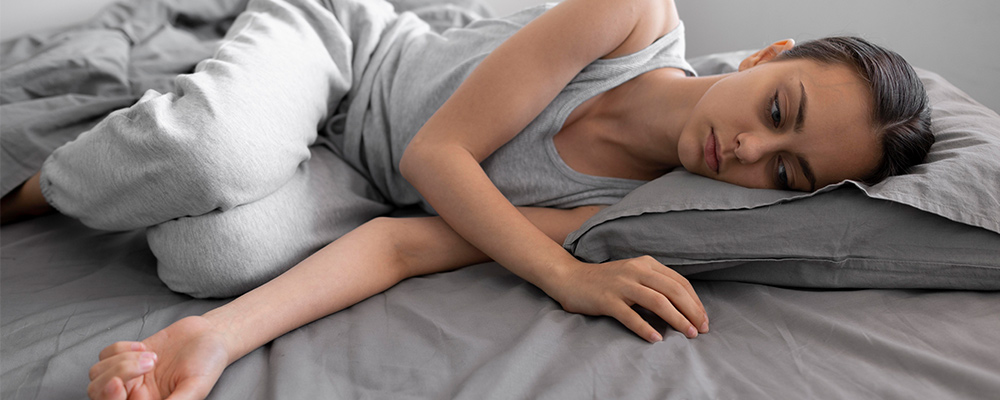
Post-traumatic stress disorder (PTSD) is a mental health condition that can develop after experiencing traumatic events such as war, abuse, criminal assault, terrorism, natural disasters, or accidents. The National Center for PTSD estimates that 7 to 8 percent of people will experience PTSD at some point in their lives. Symptoms of PTSD include flashbacks, memory problems, feeling on edge, and being easily startled.
Sleep problems are also common, with many individuals experiencing insomnia and nightmares. Emerging research indicates a strong association between PTSD and obstructive sleep apnea (OSA), a condition where breathing is temporarily interrupted during sleep, leading to unrefreshing sleep and daytime sleepiness. Managing both PTSD and OSA can significantly improve an individual’s health and quality of life.
Can PTSD Cause Sleep Apnea
Understanding the relationship between PTSD and sleep apnea is complicated as it is an interplay between a sleeping disorder and a mental health condition. However, with the increasing advancement in research, comprehending the bidirectional relationship between the two has become possible.
Overview of Research Linking PTSD and Sleep Apnea
Recent studies done on individuals show a strong association between PTSD and sleep apnea. For example, veterans with PTSD are likely to suffer from obstructive sleep apnea (OSA) when compared with the general population. One study showed that 70% of veterans with PTSD also have OSA. Not only veterans but civilians as well have shown higher rates of PTSD and sleep apnea. Now, the research underscores the importance of screening for sleep apnea in individuals diagnosed with PTSD, as treating one condition can positively impact the other.
How PTSD Can Lead to or Exacerbate Sleep Apnea
PTSD can be characterized by persistent anxiety and hyperarousal, which can significantly disrupt sleep patterns. This disruption can contribute to or worsen sleep apnea in several ways.
Hyperarousal and Its Impact on Sleep:
Hyperarousal is defined as a heightened physiological and psychological tension, a core of PTSD. Because of being in a hyperarousal state, such individuals find it hard to relax and experience heightened alertness when trying to sleep. This continuous state of vigilance can prevent deep, restorative sleep crucial for health and contributes to fragmented sleep patterns. This will increase the likelihood of developing sleep apnea. Hyperarousal can lead to frequent awakenings and shallow sleep, creating an environment where breathing disruptions like sleep apnea can thrive.
The Role of Stress and Anxiety:
Stress and anxiety, common in PTSD, can worsen sleep apnea by increasing muscle tension and inflammation in the airways, thus contributing to obstructed breathing during sleep. Furthermore, the physiological effects of chronic stress include elevated levels of cortisol, which can also influence the severity of sleep apnea. The constant state of stress in PTSD can contribute to weight gain, which in turn is a risk factor for sleep apnea.
How Sleep Apnea Can Worsen PTSD Symptoms
Since the relationship is bidirectional, sleep apnea can also worsen the symptoms of PTSD. It starts a vicious cycle that complicates treatment and recovery.
Effect of Poor Sleep Quality on Mental Health:
Taking quality sleep is crucial for physical and mental health, and disruption in sleep caused by sleep apnea can aggravate PTSD symptoms. Poor sleep quality can lead to increased anxiety, irritability, and depression, all of which are common in PTSD. When individuals with PTSD do not get enough restorative sleep, their ability to cope with stress and anxiety diminishes. It leads to an intensification of PTSD symptoms.
The Cycle of Sleep Disruption and Heightened PTSD Symptoms:
Sleep apnea causes frequent awakenings that result in poor sleep quality and create a detrimental cycle. This, in turn, exacerbates PTSD symptoms, such as hypervigilance and anxiety. These symptoms further disrupt sleep, perpetuating the cycle. This cycle can make it difficult for individuals to achieve the deep, restorative sleep necessary for recovery from both PTSD and sleep apnea.
Treatment and Management
Treating PTSD and sleep apnea is essential for improving life quality for people suffering from the two conditions. There are approaches present to treat each condition.
Approaches to Treating PTSD
CBT Therapy:
CBT is considered a highly effective form of therapy for PTSD. It helps individuals identify their negative thought patterns and behaviors and work on them. Some techniques, like cognitive restructuring and exposure therapy, can help patients confront and lessen the effects of distressing memories associated with PTSD.
Eye Movement Desensitization and Reprocessing (EMDR): It is another evidence-based therapy for treating PTSD. It involves guided eye movements when an individual is recalling a traumatic event. It can help reduce the intensity of traumatic memories and improve emotional regulation.
Medication:
- Antidepressants: Selective serotonin reuptake inhibitors (SSRIs) are commonly prescribed to help reduce PTSD symptoms, including anxiety and depression.
- Anti-anxiety Medications: Your healthcare provider may prescribe anti-anxiety medications for short-term relief of severe anxiety symptoms.
Approaches to Treating Sleep Apnea
CPAP Therapy:
- Continuous Positive Airway Pressure (CPAP): CPAP therapy is one of the best-known therapies for treating obstructive sleep apnea (OSA). It requires wearing a mask that provides continuous air pressure to keep the airways unblocked during sleep, preventing breathing interruptions.
Also Read: In-Home vs. Lab-Based CPAP Titration: The Right Approach for Patients
Lifestyle Changes:
- Weight Management: Maintaining a healthy body weight can reduce the severity of sleep apnea. Diet and exercise can significantly help you lose weight, leading to improved breathing patterns.
- Sleep Position: Sleeping on the side rather than on the back can help in preventing airway blockage. One can use special pillows or devices to encourage side-sleeping.
- Avoiding Alcohol and Sedatives: These substances can relax the throat muscles, which can worsen sleep apnea symptoms.
Also Read: Home Remedies for Sleep Apnea: 7 Effective Solutions
Surgery (If Necessary):
- Surgical Options: For some people, CPAP therapy doesn’t seem effective. Thus, they search for surgical options. These can reduce or remove the tissue blocking the airway. This includes uvulopalatopharyngoplasty (UPPP), tonsillectomy, or maxillomandibular advancement (MMA).
Integrated Treatment Strategies for Both Conditions
Importance of a Multidisciplinary Approach:
A multidisciplinary approach is crucial for treating individuals with both PTSD and sleep apnea. Collaboration among healthcare providers, including primary care physicians, sleep specialists, mental health professionals, and sometimes surgeons, ensures comprehensive care.
Combining Therapies for Better Outcomes:
A combination of treatments for PTSD and sleep apnea can lead to better outcomes. For example, CPAP can improve sleep quality, which can enhance PSTD treatments’ effectiveness. Furthermore, therapy and medication taken to reduce PTSD symptoms can reduce stress levels and ultimately improve sleep apnea symptoms.
- Patient Education: Educating patients on the connection between PTSD and sleep apnea and the importance of adhering to treatment plans for both conditions can empower them to take an active role in their recovery.
To understand sleep apnea better and treat it, you can visit us here.
Conclusion
The intricate relationship between PTSD and obstructive sleep apnea (OSA) shows the importance of a comprehensive approach to diagnosis and treatment. Furthermore, many people wonder can PTSD cause sleep apnea, and for that, recognizing the bidirectional nature of these conditions is important, as PTSD can exacerbate sleep apnea symptoms, while sleep apnea can worsen PTSD symptoms. Understanding the role of hyperarousal, stress, and anxiety in this interplay shows the necessity of addressing both conditions simultaneously to break the cycle of disrupted sleep and heightened PTSD symptoms. Effective management of PTSD through cognitive behavioral therapy (CBT), eye movement desensitization and reprocessing (EMDR), and medication can reduce anxiety and stress, potentially alleviating the severity of sleep apnea.

